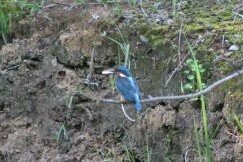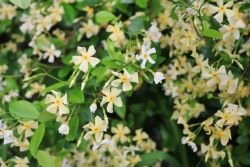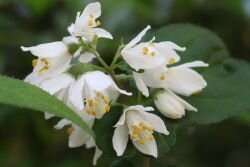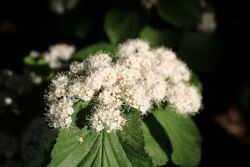Bio Garden News

Millennium Forest News from May 10

A kingfisher catches a fish in the upper pond!
However, instead of eating the fish, the bird returned to its nest. Why?
In fact, April and May are the season when kingfishers raise their young.
The kingfishers diligently share food with the chicks in the nest, working hard to raise them.
I hope we can see some cute kids again this year.

This is a Japanese ivy blooming near the entrance to the Millennium Forest.
It is a climbing shrub that produces small pale yellow flowers.
The name "Teikakazura" is said to come from the legend that Fujiwara no Teika loved Princess Shikishi so much that he was unable to forget her even after her death, and so he turned into a vine and entangled himself around her grave.

While observing the Mayumi flowers, some ants came to suck the sweet nectar!
The ants store nectar from flowers in their stomachs, bring it back to their nest, and share it with other ants.
Ants are hard workers, collecting nectar for their fellow ants.

This is a Deutzias flower, the contrast between white and yellow giving it an impression of innocence and cuteness.
Deutzias can be found in a variety of places, including mountainous regions, forests, and riverbanks, and are beloved as part of Japan's original landscape.

The striking soft purple petals of the iris orchid are now in full bloom and can be found all over the forest.
In addition to its beauty, it has long been used in traditional Chinese medicine to treat blood, pain, and chronic gastritis, and has supported people's lives.

The plant that bloomed the white bunches of flowers was Viburnum.
The red fruits that ripen in autumn are used to make fruit liqueurs and are popular among people.
The fruit has a slightly sour taste, so the "zumi" in Viburnum means sour fruit.

